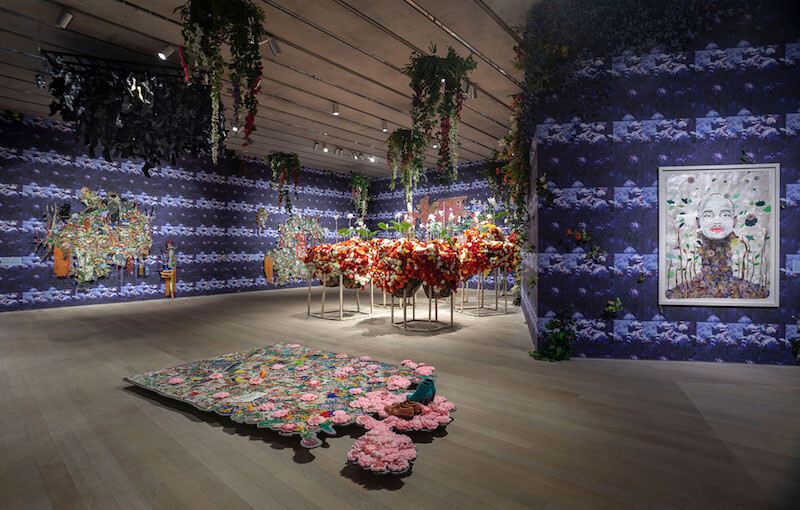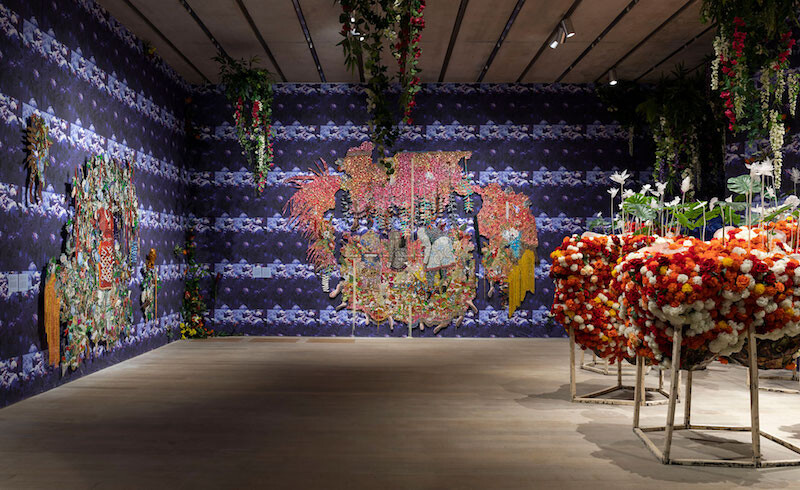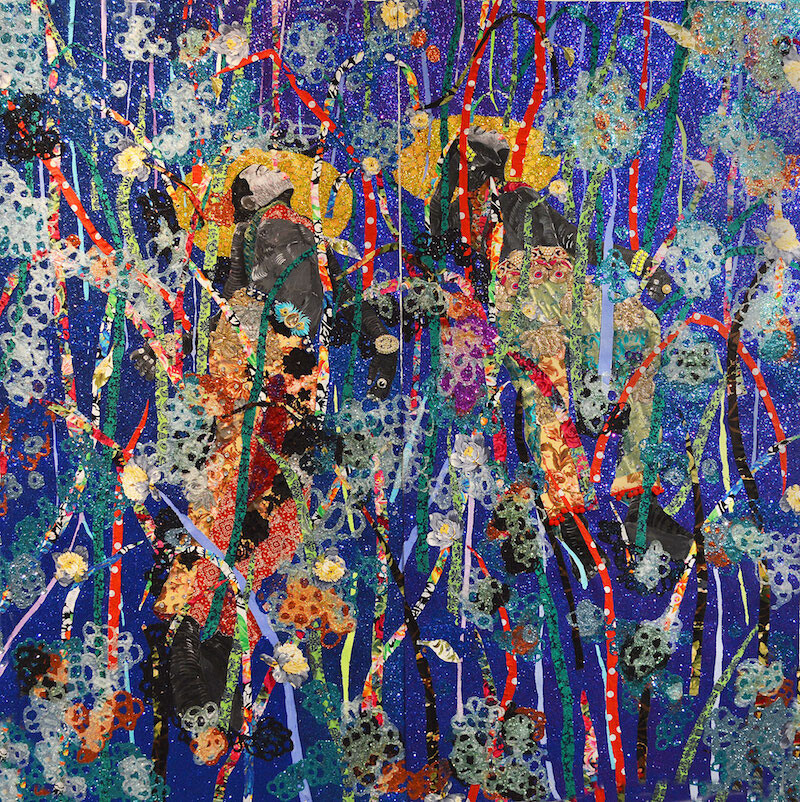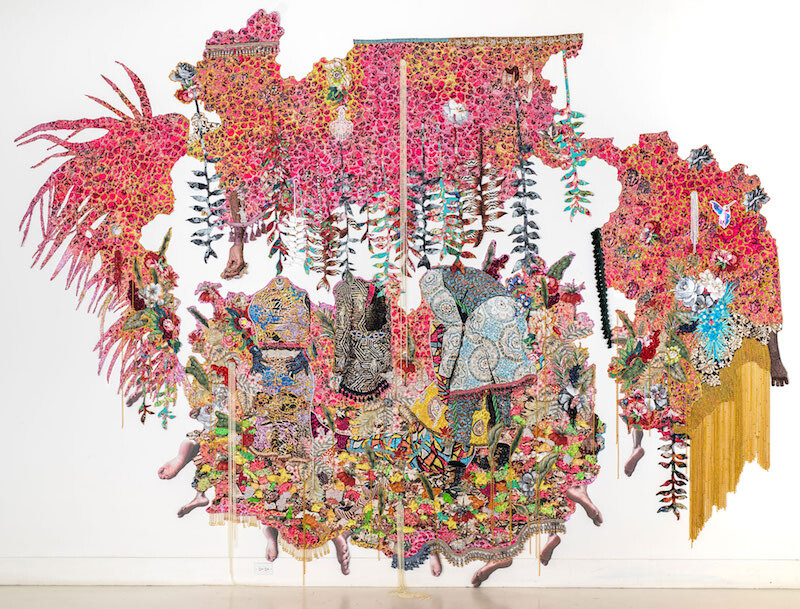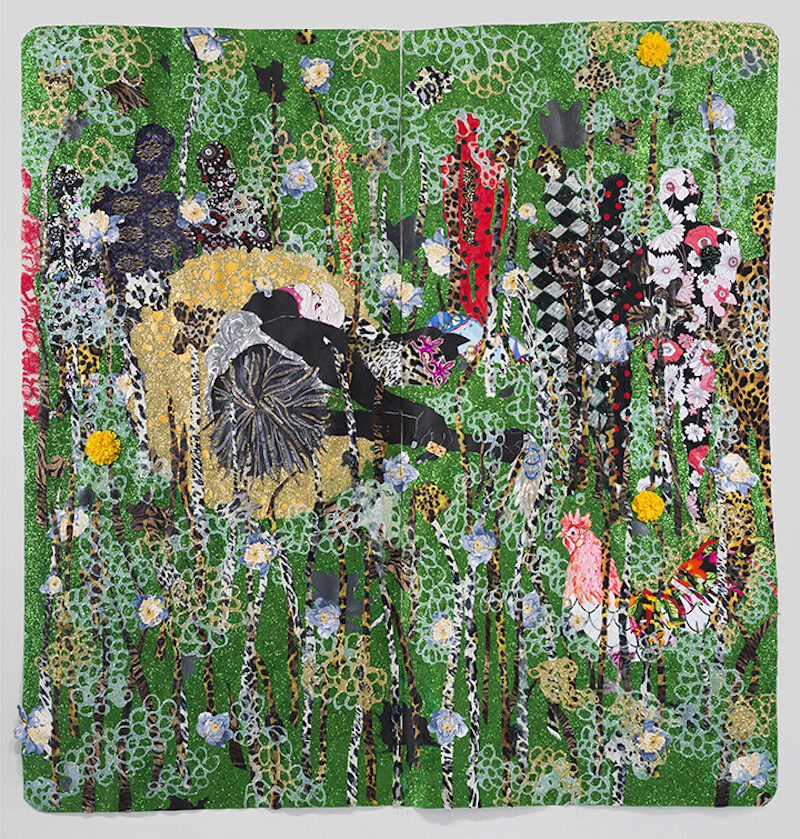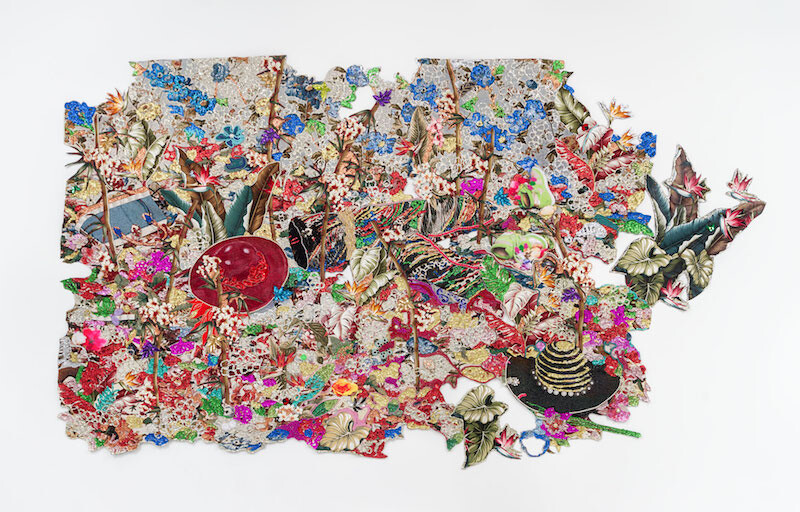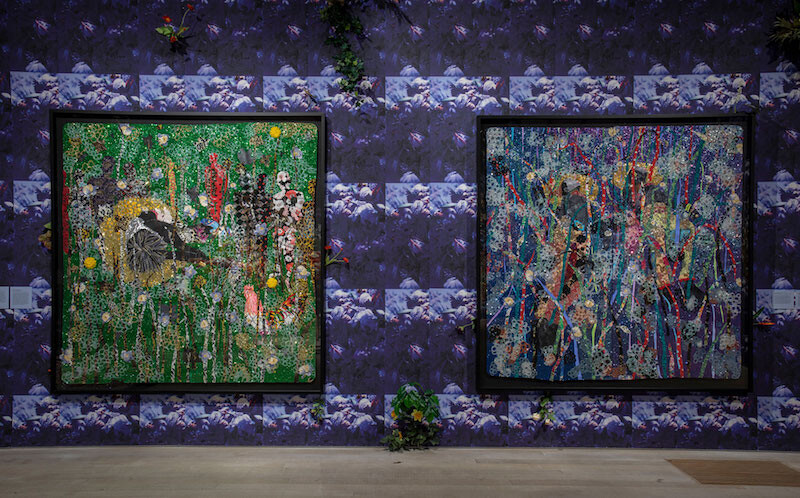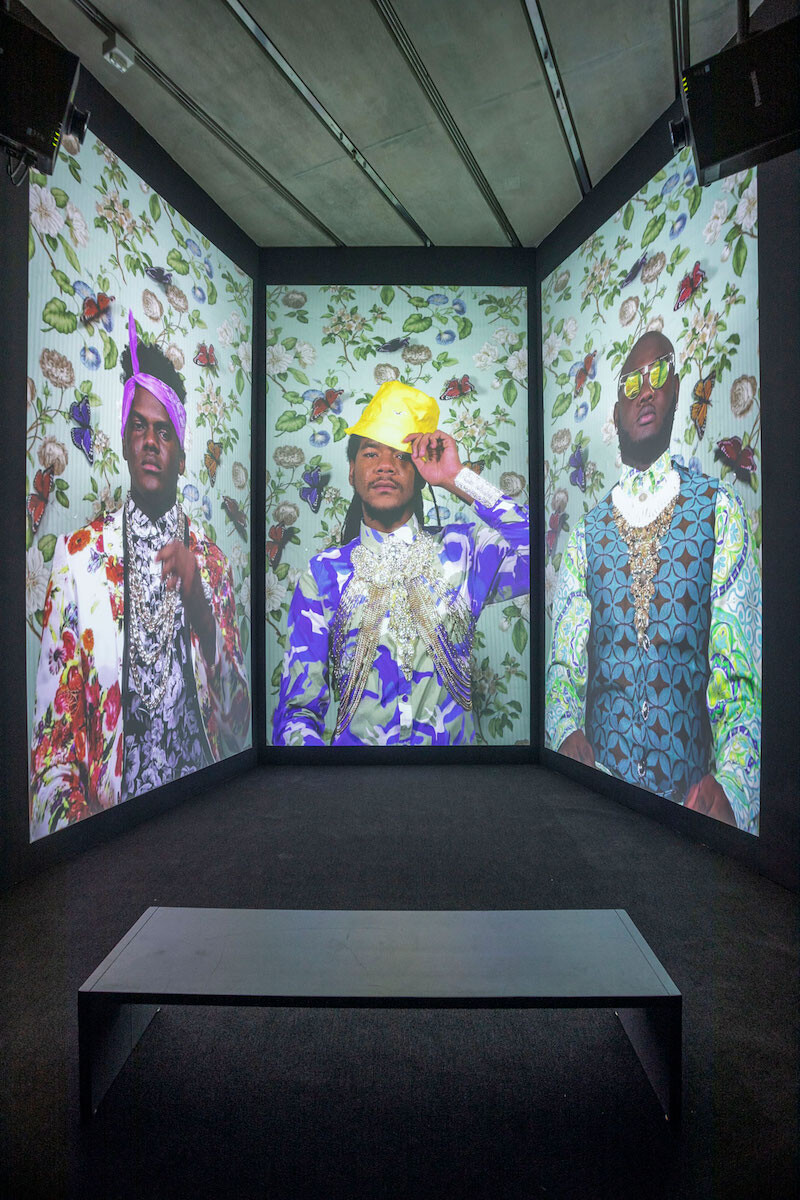When C. Austin Miles wrote “In the Garden,”1 a 1912 gospel hymn that speaks of quiet joy and equally silent pain, he was in a basement, no garden in sight, entranced by a vision of the meeting of Jesus and Mary. “I seemed to be standing at the entrance of a garden,” he said, “looking down a gently winding path.”2
When I met the singer and artist Lonnie Holley in 2013, in a garden, he told me, “The sun will reach down with its rays—‘I come to the garden alone while the dew is still on the roses,’” quoting the song’s opening. “Maybe Father Sun is the ‘I’—his many rays touching, precipitating, rising up the dew.” In the hymn, God walks with the solitary narrator, sings sweetly in her ear, “And the joy we share as we tarry there / None other has ever known.” She’d “Stay in the garden with Him / Though the night around me be falling / But he bids me go—through the voice of woe.” She’s alone—but not really—anywhere. The garden is merely a suggestion.
Ebony G. Patterson’s garden in “…while the dew is still on the roses…” is nocturnal, and the song it sings is woeful, watery, and celebratory. Patterson’s glittered tapestries, clusters of fake flowers, and plastic butterflies palpitate and shimmer. Everything looks purple. Everything feels purple—regal, or liminal, blues and reds harmonized.
In an opening night talk, Patterson mentioned bling, its visibility and shine. The tender act of adorning a body. In a show comprised mostly of new work, her 2010 photograph Entourage, in which a whole family is radiant, is not out of place. The installation will surely make its way into, she predicted at the talk, “selfies of people whose clothes match the setting, but I’m using beauty as a tool to seduce the viewer.”
Gardens are for renewal and bloom. They’re also spaces of internment. In a painting that sparkles like water, two bodies arch themselves toward a tinseled stretch of blue, Patterson’s homage to two young boys who drowned in a flash flood in Jamaica, where she’s from (…wata marassa-beyond the bladez…, 2014). In a tapestry whose leaves, pearls, chains, and brilliant bougainvillea seem to bloom from the wall, so do disembodied feet and a lavishly cloaked headless figure (…they stood in a time of unknowing … for those who bear/bare witness, 2018). The soles of black-glittered boots hang from the ceiling like clouds, or like the other kind of soul (starz, 2018). Flowers crawl from the wall, rootless. And then there’s the title of the show, and so much of the work, fragmented and halved. Cut short, or given space.
But death might be the predecessor to rebirth; if it isn’t, it’s cause for homage. There’s no lack of joy or sentimentality in Patterson’s show. She takes great pleasure in the sticky, bright ornamentation of her objects, and in the unequivocal reverence of her figures. A set of floral mounds are raised on plinths, high enough for viewers to imagine they’re underground (…moments we cannot bury…, 2018). They’re stacked with bundles of red and yellow bouquets and, above them, white bell-shaped posies poised on thin, erect stems, growing higher, the roots that sprang through the fetor. Patterson has made every flower a simulacrum of a poisonous species.
Frosted-glass feet, a teddy bear, and a hand with a gold watch still draped on the wrist emanate from those lush, toxic masses. Patterson’s bodies don’t decay but distill. Grow a little more austere with time. Patterson honors them, and so will you. You must pass through these graves to get back to life, through an archway into what is effectively the garden’s grotto, a ceiling-high three-channel video of three black men slowly dressing themselves, tears pooling on their cheeks (…three kings weep…, 2018). Only eight minutes long, it takes time before it becomes clear the video is shown in reverse. A ring placed on the finger rotates backward; hair tied back, in truth a ponytail unraveled, seems to fly, like wings. The tears flow tremulously, like rivers. A child recites lines from the Jamaican poet Claude McKay’s 1919 poem “If We Must Die”: “If we must die, O let us nobly die / So that our precious blood may not be shed / In vain; then even the monsters we defy / Shall be constrained to honor us though dead!” It is a reference, said Patterson, to “dying on one’s own terms.” The men crown themselves with a bandana, a hat, glasses the color of the sun. Notice how awfully slowly one hand moves—how the moment the men began to cry is, here, the moment they stopped.
